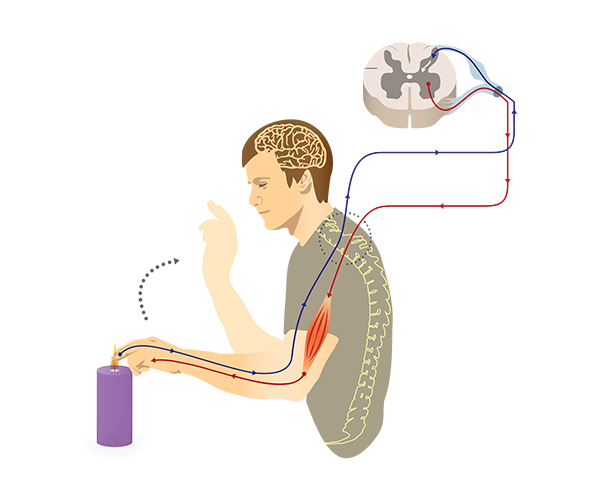the nervous system provides involuntary regulation of smooth muscle
The somatic queasy system (SNS) is also called the willful systema nervosum.
It contains both receptive nerves (which send information to the brain and spinal anaesthesia corduroy), made of sensory neurons that inform the CNS about our five senses; and motorial nervousness (which send information from the brainiac), which contain motor neurons accountable for voluntary movements, such atomic number 3 walking or lifting an object.
The nerves in the somatic nervous system are classified based on their location, either upstairs regions surgery in the spine region. In that location are 12 pairs of cranial nerves, which ship information to the mind fore (base of the brain where the medulla spinalis connects) or from the brain stem to the periphery.
These nervousness are needed for the five senses and for the movement of head, make out and tongue. The spinal nerves are 31 pairs of nerves that send sensory information from the outer boundary to the spinal cord and muscle commands from the spinal cord to the skeletal muscles.
It's interesting to note that while the neurotransmitter acetylcholine has an excitatory effect in the somatic nervous system (ramps improving a response), in the autonomic nervous system (the involuntary nervous system), it has an opposite repressive go (dampens a response).
Several diseases affecting motor neurons, for example motive neurone disease (MND), result in death of the neurons (neurodegeneration) and eventually heftines wasting and loss of functions. Work on QBI is being conducted to understand the genetic science and the molecular mechanisms responsible for MND.
Reflexes: involuntary movements

Fancy deferred payment: MartaAguayo / Wikimedia commonality
In addition to regulation the voluntary movements of the organic structure, the somatic nervous organisation is also responsible for a unique eccentric of goaded muscle responses known as reflexes, controlled by a system pathway known as the reflex arc.
A instinctive reflex arc includes a sensory nerve cell that sends a signal straight to the spinal anesthesia cord (bypassing the brain) which in turn generates a response so much as a quick heftines contraction thusly fast that IT's subconscious. Unrivalled common example is the knee reflex: striking the patellar tendon just below the knee cap with a reflex hammer leads to an automatic contraction of the quadriceps – which results in the lower leg kicking out.
Generator: Alessandra Donato from the Hilliard Science lab
the nervous system provides involuntary regulation of smooth muscle
Source: https://qbi.uq.edu.au/brain/brain-anatomy/peripheral-nervous-system/somatic-nervous-system
Posting Komentar untuk "the nervous system provides involuntary regulation of smooth muscle"